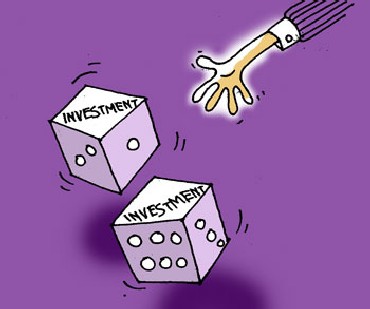 | « Back to article | Print this article |
What to do when a fund house merge schemes
Last Saturday, ICICI Prudential Asset Management Company merged three of its schemes into a single one. The fund house merged three source funds Fusion I, Equity Opportunities Fund and Fusion III with ICICI Prudential Dynamic Fund, the target fund.
Over the last one year, six fund houses, including UTI MF and Principal MF, have merged their schemes, "Fund houses look at merging schemes where there is a duplicity of content or if the scheme has been underperforming historically," says Aashish Somaiya, head (retail business), ICICI Prudential AMC.
Click NEXT to read more...
What to do when a fund house merges schemes
Schemes are also merged if the corpus is too low. In the case of ICICI Prudential AMC, the corpus of the three source funds put together added up to Rs 1,100 crore (Rs 11 billion) and the assets under management (AUM) of the target fund stood at Rs 3,000 crore (Rs 30 billion), says Somaiya.
Over the last couple of years, the Securities Exchange Board of India (Sebi) has been nudging fund houses to go for mergers, thanks to many similar-themed schemes with the same fund house leading to confusion for the investors. Currently, there are more than 3,000 schemes offered by 42 fund houses.
For investors in the three source funds, the important question should be whether to exit the scheme or opt for merger with the target scheme.
Click NEXT to read more...
What to do when a fund house merges schemes
According to Sebi guidelines, investors in source schemes are given a month's time to exit the source schemes, without any exit load.
In this case, things should be simple for investors. ICICI Prudential Dynamic Fund is an open-ended diversified equity scheme.
It is a multi-cap scheme aiming to "generate capital appreciation" by investing primarily in equities and for defensive consideration in fixed income securities, including money market instruments.
The scheme has given impressive returns. ICICI Dynamic Fund gave returns of 14.3 per cent last year and 14.24 per cent annually over a five-year period.
Click NEXT to read more...
What to do when a fund house merges schemes
The category average the multi-cap category has given returns of 9.04 per cent and 10.66 per cent for one and five years, respectively.
After the one-month period, units of existing schemes are exhausted (read redeemed) and those of the new scheme purchased at the current net asset value (NAV).
So, if the NAV of the target scheme is more than the source scheme, one could expect lower number of units.
"However, it does not make a difference. A higher NAV does not impact the performance of a scheme as the rise or fall of stock prices in percentage terms will be reflected in the same proportion in the NAV," said Hemant Rustogi, CEO, Wiseinvest Advisors.
For investors, even if you do not exit during the 'grace period', you can do so any time after the merger, as target schemes are usually open-ended.
Click NEXT to read more...
What to do when a fund house merges schemes
Radhika Gupta, director at Forefront Capital, says that if the target scheme has underperformed historically, one could exit.
Depending on how long you have been holding the units of the schemes, you will be charged short- or long-term capital gains tax.
In the case of an equity fund, if you exit within a year, you will have to pay a short-term capital gains tax of 15 per cent on the profits you have made.
However, if you have been invested for more than a year, no capital gains tax is levied.





